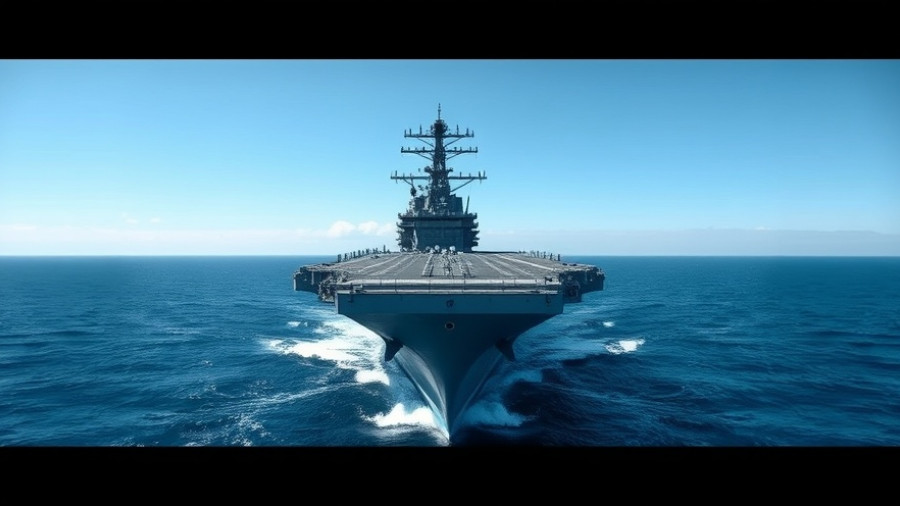
Escalation of Military Power in the Caribbean: A Bold Move
The deployment of the USS Gerald R. Ford aircraft carrier to the Caribbean signifies a major escalation in the United States' military presence in the region. This significant buildup includes additional strike groups, advanced aircraft, and a strong naval presence, marking what many officials refer to as an unprecedented show of force aimed primarily at Venezuela.
The Underlying Motivations behind the Buildup
While the U.S. government touts its bolstering military presence as efforts to combat drug trafficking, the existing tensions with Venezuela cannot be overlooked. Over recent months, military exercises and operations against alleged drug vessels have increased, indicating a clear shift in U.S. strategy. The Pentagon’s spokesperson Sean Parnell emphasized the need to “detect, monitor, and disrupt illicit actors,” suggesting that there are broader objectives at play beyond just counter-narcotics operations.
The Complex Relationship with Venezuela
Venezuela, led by President Nicolás Maduro, has been consistently targeted by the U.S., which accuses his government of harboring drug traffickers and undermining democratic processes. Maduro himself has declared that any U.S. interference would prompt a widespread insurrection. These developments illustrate the contentious backdrop against which the military buildup is occurring. The recent increase in tension could spur unpredictable responses from Venezuela, particularly following Trump’s report of deploying surveillance bombers near the Venezuelan coast.
Wider Implications for the Region
This military escalation has implications beyond Venezuela’s borders. Coupled with Trump’s harsh rhetoric towards Colombian President Gustavo Petro, observers have expressed concerns about a shift in U.S. policy towards Latin America. It appears that the military buildup is not just about combatting drug trafficking; it serves as a tool for the U.S. to exert influence over regional geopolitics, effectively sending a message to neighboring countries regarding their alignment with U.S. interests.
The Potential Path Forward
With increased military assets positioned close to Venezuela, experts suggest that the U.S. may not have enough resources for a full-scale invasion, but it does possess the capability for surgical strikes against key targets. This dual emphasis on pressure and a show of force may represent a strategy aimed at destabilizing Maduro's government without the commitment to full-scale military intervention.
The next few months will be critical in determining whether this military buildup translates into significant changes in Venezuela or exacerbates tensions in the region. Observers are left questioning what this means not just for the U.S.-Venezuela relationship, but for broader U.S.-Latin America relations.
 Add Row
Add Row  Add
Add 




Write A Comment